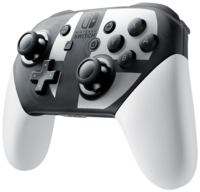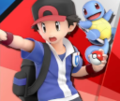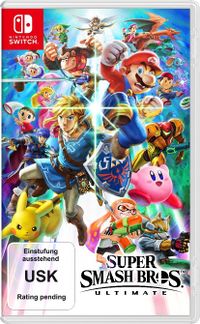Super Smash Bros. Ultimate: Difference between revisions
No edit summary |
PianoKing03 (talk | contribs) (→References to other games: The statement has already been listed earlier in the reference, thus this sentence is a duplicate.) Tag: Mobile edit |
||
| Line 628: | Line 628: | ||
*''[[Paper Mario: Color Splash]]'': Paper Mario's spirit artwork comes from this game, albeit with the white outline removed. | *''[[Paper Mario: Color Splash]]'': Paper Mario's spirit artwork comes from this game, albeit with the white outline removed. | ||
*''[[Mario + Rabbids Kingdom Battle]]'': [[Rabbid Peach]]<ref name=NovemberDirect/> and [[Mega Rabbid Kong]]<ref name="Tons of Details"/> appear as spirits. | *''[[Mario + Rabbids Kingdom Battle]]'': [[Rabbid Peach]]<ref name=NovemberDirect/> and [[Mega Rabbid Kong]]<ref name="Tons of Details"/> appear as spirits. | ||
*''[[Super Mario Odyssey]]'': [[Cappy]] makes an appearance as Mario's cap; one of Mario's new taunts features him tossing Cappy. Cappy also appears as a spirit.<ref name=NovemberDirect/> Occasionally, Mario's [[Super Jump Punch]] will feature the [[regional coin]]s found in the [[Metro Kingdom]] in place of the standard [[coin]]s, and plays the same sound effect as the one that plays when a new regional coin is collected. New Donk City Hall appears as a stage. Mario has a new costume based on his wedding tuxedo | *''[[Super Mario Odyssey]]'': [[Cappy]] makes an appearance as Mario's cap; one of Mario's new taunts features him tossing Cappy. Cappy also appears as a spirit.<ref name=NovemberDirect/> Occasionally, Mario's [[Super Jump Punch]] will feature the [[regional coin]]s found in the [[Metro Kingdom]] in place of the standard [[coin]]s, and plays the same sound effect as the one that plays when a new regional coin is collected. New Donk City Hall appears as a stage. Mario has a new costume based on his wedding tuxedo. | ||
*''[[WarioWare Gold]]'': [[5-Volt]], [[Ashley and Red|Ashley]], [[Jimmy T.]], [[Young Cricket and Master Mantis|Young Cricket]], [[Kat and Ana]], and [[Mona]] appear as spirits, using their artwork from this game.<ref name="Tons of Details"/> | *''[[WarioWare Gold]]'': [[5-Volt]], [[Ashley and Red|Ashley]], [[Jimmy T.]], [[Young Cricket and Master Mantis|Young Cricket]], [[Kat and Ana]], and [[Mona]] appear as spirits, using their artwork from this game.<ref name="Tons of Details"/> | ||
*''[[Luigi's Mansion 3]]'': Luigi's new [[Poltergust]] was first shown off during Simon and Richter's reveal trailer, boasting its new design and the ability to fire plungers, and is used in his grab and throws. | *''[[Luigi's Mansion 3]]'': Luigi's new [[Poltergust]] was first shown off during Simon and Richter's reveal trailer, boasting its new design and the ability to fire plungers, and is used in his grab and throws. | ||
Revision as of 22:51, November 18, 2018
This article is about an upcoming game. Editors must cite sources for all contributions to this article. Edits that do not follow this standard may be reverted without notice.
- "SSBU" redirects here. For information about this game's Wii U predecessor, see Super Smash Bros. for Wii U.
Template:Infobox Super Smash Bros. Ultimate[1] is an upcoming game in the Super Smash Bros. series for the Nintendo Switch. The game was announced through a teaser trailer in the March 2018 Nintendo Direct[2], and is set to be released on December 7, 2018.
Gameplay
Super Smash Bros. Ultimate retains the series' basic gameplay elements, with several new mechanics and changes. As with previous installments, the objective of the game is to launch opponents off the stage. Players build each other's damage percentage through attacks, and the higher the percentage, the farther they fly when they are hit. This time, the damage count is in decimal notation, adding a tenth to the number. Additionally, when an opponent is launched, their launch speed is the fastest at the start, unlike in previous games in the series. During 1-on-1 battles, all fighters' attacks deal 1.2x their regular damage and knockback, which is done to "increase gameplay speed."[1] Additionally, characters can use any ground attack out of a run (e.g. standard attacks, tilt attacks, smash attacks), while any aerial attack can be used while climbing a ladder, officially known as a "ladder attack".
Three techniques are also introduced in Super Smash Bros. Ultimate: the Directional Air Dodge, Short-Hop Attack, and Perfect Shield. The Directional Air Dodge, a technique carried over from Super Smash Bros. Melee, allows the player to dodge while moving at the direction they tilt , which can also be used for recovery. However, if a player dodges excessively - in the air or on the ground - they become more vulnerable to attacks, and their dodge range becomes shorter as well. The Short-Hop Attack is performed by pressing the attack and jump buttons at the same time, allowing the player to hop a short distance off the ground while performing an air attack; however, all short-hopped aerial attacks deal 0.85x their regular damage. The Perfect Shield can be performed by releasing the shield button just as an opponent attack lands, nullifying the attack.[1]
During a match, the fighter that is in the lead occasionally emits a glimmer of light. If a match enters Sudden Death, unlike in previous games where Bob-ombs begin to drop after a period of time, the screen slowly zooms in on the center of the stage, shrinking the field of view and stage boundary and thereby making it easier for fighters to be KO'd. The Sudden Death mode is visually accompanied by flames that intensify as the screen zooms in on the stage.[3]
As with Super Smash Bros. for Wii U, Super Smash Bros. Ultimate also supports Nintendo GameCube controllers.[1]
Super Smash Bros. Ultimate will be available in 11 different languages: Japanese, English, French, Spanish, German, Italian, Dutch, Russian, Simplified Chinese, Traditional Chinese, and Korean.
Smash
- “Battle with up to 8 players in regular battle!”
- —In-game description
Before starting a match, the player can create their own preset rules, such as the number of stocks and time limit, which they can quickly select at any time. In addition to Time and Stock modes, Stamina mode is now a standard mode alongside the aforementioned two, and no longer a part of Special Smash. Stocks can also be added to Stamina mode.[3]
8-Player Smash also returns from Super Smash Bros. for Wii U, and can now be played on any stage from the start.[1][3]
A new rule option added to Super Smash Bros. Ultimate is the Final Smash Meter, which appears below each fighter's damage meter and fills up as the player takes damage from opponent attacks, similar to Little Mac's Power Meter. Once it is full, the player can then use a Final Smash. These Final Smashes are weaker than regular Final Smashes obtained from Smash Balls, and like them, only one can be used at a time.[3]
Squad Strike
Squad Strike (Japanese: 団体戦 Dantaisen, Team Competition) is an elimination-style battle mode added to Super Smash Bros. Ultimate. The player can choose between 3-on-3 or 5-on-5 Squad Strikes, which can be carried out with one player on each side playing as three or five characters, or three or five players on each side each playing as one character. In a Squad Strike, both sides battle each other as the three or five characters consecutively in one battle.[3]
Tourney
Tourney returns from Super Smash Bros. Brawl, allowing up to 32 participants to compete. After selecting the number of total participants, number of CPU players and tourney type, the game automatically generates a tournament bracket.[3]
Special Smash
In a new Special Smash mode, Smashdown (Japanese: 全員バトル Zen'in Batoru, All-Members Battle), players enter a series of matches selecting a character for each one. After one match ends, however, the characters used in that match are no longer available for subsequent matches, forcing players to select a different character for the next one.[3]
Classic
Classic mode returns from previous installments, returning to its original format last seen in Super Smash Bros. Brawl, in which the player fights multiple opponents in a linear series of matches to reach the end. This time, each fighter has a set series of opponents to face.[3]
Adventure
The Adventure Mode in this game is called World of Light.[4] In it, a monster called Galeem defeats all the fighters except Kirby, imprisoning them in the eponymous World of Light, where they are cloned and their clones are possessed by spirits, which are the other victims of Galeem's attack. Other than this information, the story has been stated to be open to individual interpretation.[4] It has a board game-like map, and elements and maps based off of various games have been shown; Warp Pipes and ! Switches are noticeable.
Training
Training mode lets players practice and experiment with characters' moves, items and the CPU as well as manipulate gameplay elements (such as game speed and damage), also returning from previous installments. The mode now features an exclusive numbered, grid-like stage, which allows the player to measure distances such as jump height and projectile range. In addition, attacking the CPU fighter with a strong attack shows the trajectory at which they are launched in the form of a green curve, compared with the trajectory if they were launched at 0% damage (a red curve) and 100% damage (a blue curve).[3]
Playable characters
- “Everyone is here!”
- —E3 2018 trailer
In addition to introducing new characters, Super Smash Bros. Ultimate features every previously playable character in the series. Counting Pokémon Trainer and his/her Pokémon as a single fighter and the three Mii Fighter types separately, a total of 74 fighters, including 7 Echo Fighters (characters whose movesets and basic attributes are mostly identical to that of another character, and are represented by an epsilon symbol "ε"), have been confirmed to appear in Super Smash Bros. Ultimate at launch.[4] It has also been confirmed that at least 6 fighters will be released after launch as DLC.[4] The number beside each playable character (excluding Echo Fighters) signifies the order in which they were announced to be playable in the Super Smash Bros. series; in the case of the unlockable characters from Super Smash Bros. Melee, their order is based on the number of Vs. matches required to unlock them in that game. The starting roster will consist of the eight starting fighters from the original Super Smash Bros.; the rest of the roster needs to be unlocked.[4]
Veterans
01 Mario

02 Donkey Kong

03 Link

04 Samus

05 Yoshi

06 Kirby

07 Fox

08 Pikachu

09 Luigi

10 Ness

12 Jigglypuff

13 Peach

14 Bowser

15 Ice Climbers

16 Sheik

17 Zelda

18 Dr. Mario

19 Pichu

20 Falco

21 Marth

21ε Lucina

22 Young Link

23 Ganondorf

24 Mewtwo

25 Roy

27 Meta Knight

28 Pit

28ε Dark Pit

30 Wario

31 Snake
32 Ike

33/34/35 Pokémon Trainer

33 Squirtle

(with Pokémon Trainer)34 Ivysaur

(with Pokémon Trainer)35 Charizard

(with Pokémon Trainer)36 Diddy Kong

37 Lucas

38 Sonic

39 King Dedede

41 Lucario

42 R.O.B.

43 Toon Link

44 Wolf

45 Villager

46 Mega Man

49 Little Mac

50 Greninja

51/52/53 Mii Fighters

51 Mii Brawler

53 Mii Gunner

54 Palutena

55 Pac-Man

56 Robin

57 Shulk

58 Bowser Jr.

(with Koopalings model swaps)[6]59 Duck Hunt

60 Ryu

61 Cloud

62 Corrin

63 Bayonetta

Newcomers
Twelve newcomers (five being Echo Fighters) have currently been confirmed for Super Smash Bros. Ultimate.[1][3] Characters marked with an asterisk (*) are downloadable content.
04ε Dark Samus

13ε Daisy

25ε Chrom

60ε Ken

64 Inkling
65 Ridley

66 Simon
66ε Richter
67 King K. Rool

69 Incineroar
 [4]
[4]
70 Piranha Plant*
 [4]
[4]
Stages
Unlike in previous installments, stages are selected before characters in Super Smash Bros. Ultimate. All stages can not only be played in their Final Destination form (known as Omega (Ω) form) as in Super Smash Bros. for Nintendo 3DS / Wii U, but also in a new Battlefield form, which adds three floating, pass-through platforms.[1] Like the original Final Destination and Battlefield, in both forms for all stages, the stage is set on a large platform floating over an abyss, as opposed to a large pillar with walls leading down to the bottom as is the case with several Omega stages in the previous installments. The player is also given the option to turn off stage hazards.
A new feature added to Super Smash Bros. Ultimate is Stage Morph, which causes the stage on which players are currently fighting to transform into another stage in the middle of the match. The player can choose two stages for this function, and can also set the frequency at which they transform between each other.[3]
Currently, there are 103 stages set to appear in the game, all of which will be available from the start.[3] The following list is sorted by the original Super Smash Bros. games in which they first appear.
New
Super Smash Bros.
Super Smash Bros. Melee
Super Smash Bros. Brawl
Super Smash Bros. for Nintendo 3DS / Wii U
Nintendo 3DS version
Wii U version
Items
New
Returning
 Dragoon Parts
Dragoon Parts
Assist Trophies
New
Returning
Poké Ball Pokémon
New
Returning
amiibo
It has been confirmed that all previously released amiibo that relate to the playable characters are usable in Super Smash Bros. Ultimate.[1] In addition to this, more amiibo of fighters in Super Smash Bros. Ultimate are set to be released in the Super Smash Bros. line. Like in Super Smash Bros. for Nintendo 3DS and Super Smash Bros. for Wii U, amiibo can act as Figure Players (FP) in battle, and amiibo data from the aforementioned games can be transferred to Super Smash Bros. Ultimate.[1] Spirits can also be used on Figure Players.[4] The following fighters are confirmed to have Super Smash Bros. amiibo based on them to be released:
- Ice Climbers[46]
- Young Link[46]
- Pichu[46]
- Wolf[47]
- Inkling (Inkling Girl)[47]
- Daisy[48]
- Ridley[47]
- Simon[49]
- Richter[49]
- Chrom[49]
- Dark Samus[49]
- King K. Rool[49]
- Isabelle[46]
- Ken[46]
- Incineroar[50]
- Piranha Plant[46]
Release
A Super Smash Bros. Ultimate-themed Nintendo Switch Pro Controller will be available at launch, which can be purchased individually or as part of a bundle that also includes the game and a black steel case with the flaming Super Smash Bros. emblem seen in the game's March 2018 teaser.[51][52] A silver 1.5" coin will also be included in the bundle as a bonus item when purchased at Best Buy.[53]
A bundle containing a specially designed Nintendo Switch console and a download code for the game was released on November 2, 2018, though the download code can't be used until the game's release on December 7, 2018. The console features a design of the original eight Super Smash Bros. series characters on the front of the dock, as well as the Super Smash Bros. symbol printed across the Joy-Con. A Super Smash Bros. Ultimate-edition Nintendo GameCube Controller and the GameCube Controller Adapter previously released for Super Smash Bros. for Wii U will also release on the same day.[7]
Pre-release and unused content
Stages
- Final Destination in the E3 demo was simply the Omega version of Battlefield, as the final design was not revealed at the time.
Character select screen and alternate costumes
- Ridley has two alternate costumes based off of Meta Ridley, but they were not present in the demo, instead featuring black and white recolored Ridleys as placeholders.
- In the demo, Villager's seventh and eighth alternate palette swaps had light skin like in the previous game, while in the final game, they have dark skin. Similarly, the Pokemon Trainer's seventh palette swap had light skin, but was changed to dark skin in the final game.
- In the E3 demo, Sonic's fourth alternate costume used a pale blue shade of fur rather than white fur like in the previous game. This has since been fixed.
- In the E3 demo of the game, Mario, Pikachu, Villager, and Link's portraits used their in-game models as opposed to the renders made for them in the game. This has since been fixed.
- However, Link's hat in the Tunic of the Wild costume was pointed toward the top right, while in his official render, it goes behind his head and is pointed to the left.
- In the demo, the Ice Climbers on the character select screen always showed Popo in the front. The final game would show Nana in the front for the 5th-8th alternate costumes.
- Wario's buttons on his overalls in the E3 video were gold, as opposed to their usual white. However, in his default overalls artwork, they are white.
- A pre-release image of Luigi in his Waluigi inspired costume has the "L" colored green. In the final game, it is colored purple, just like Super Smash Bros. for Nintendo 3DS and Super Smash Bros. for Wii U.
Victory themes
- Mario's victory theme used the full theme as with the previous games in the demo. In the final game, it is slightly abridged in the end.
- Fire Emblem victory themes used the same tempo as the previous games in the demo. In the final game, it is sped up.
- The Legend of Zelda characters, Pokémon characters and the Ice Climbers used their respective victory theme originating from Super Smash Bros. Brawl. In the final game, they each receive new victory themes which are shorter versions of the originals (the Legend of Zelda characters' uses a new arrangement altogether).[54][55]
- Ness used his standard victory theme from Super Smash Bros. Brawl and Super Smash Bros. for Nintendo 3DS / Wii U, while in the final game, he and Lucas receive a new one based off of the final two of the Eight Melodies from EarthBound.[56]
- In the demo, Corrin used the normal Fire Emblem victory theme with Marth and Ike, while in the final game, they have a unique victory theme, based off of "Lost in Thoughts All Alone" from Fire Emblem Fates.[57]
- Unlike the demo, the ending of Sonic's victory theme is slightly cut off. https://www.youtube.com/watch?v=RoxgZbmNbLI
- Ridley's victory theme sounds different in the demo compared to the final game.[57]
Movesets
- In Rosalina's character showcase video, her Final Smash Power Star took on the appearance of a Power Star just like in the previous game. However, in the actual game, the Final Smash now uses a Grand Star.[58]
- In Pikachu's character showcase video, Mr. Game & Watch could be seen in normal form when using his forward smash based off of Fire Attack. In the final game, he takes on the appearance of the characters from Fire Attack just like many of his other moves.
- This had the unintended side effect of attracting criticism from Native American audiences for its portrayal of a Native American stereotype (itself sourced from the original version of Fire Attack). Nintendo of America responded to the criticism by removing the feather from Mr. Game & Watch's model, matching a change seen in the Game Boy Advance re-release of Fire Attack.
- During Olimar's character showcase video, his Final Smash End of Day did not show visible Bulborbs even though the chomping sound effects and visuals could be heard and seen. This was fixed in the final game.[59]
Gallery
Ridley's cut palettes
Ice Climber's Character Select Screen portraits in the demo
Pokémon Trainer's pre-release palette swap.
Villager's pre-release palette swaps.
References to other games
- Donkey Kong Jr.: Donkey Kong Jr. appears as a spirit using his artwork from this game.[60]
- Donkey Kong 3: Stanley appears as a spirit.[4]
- Wrecking Crew: A new medley of the main background music and Golden Hammer theme from this game appears in Super Smash Bros. Ultimate.[3]
- Super Mario Bros. / Super Mario Bros.: The Lost Levels: One of Simon Belmont's teaser screencaps depicts him about to use his Axe special attack on Bowser, indirectly alluding to how Bowser in the classic games was defeated with an axe destroying the bridge. Piranha Plant's green costume resembles its appearance in this game. Additionally, its blue costume resembles its appearance in underground levels.
- Super Mario Bros. 2: Wart and Mouser appear as spirits.[4]
- Super Mario Bros. 3: Arrangements of the regular boss battle theme and Bowser's battle theme appear in the game.[61][62] An arrangement of the overworld theme is featured.
- Super Mario Land: Tatanga appears as a spirit.[4]
- Mario Paint: The flies and hand from Gnat Attack appear as an Assist Trophy.
- Wario Land: Super Mario Land 3: Wario's Dash Attack that debuted in this game now appears as his new dash attack. Wario's down throw now reflects the animation of the Ground Pound that debuted in this game as well.
- Donkey Kong Country: One of K. Rool's attacks involves throwing his crown as a boomerang, like in this game. A Klaptrap appears as an Assist Trophy, having the same behavior as in this game. It also appears as a spirit using its artwork from this game. A medley of "Bonus Room Blitz" (the Bonus Area theme) and "Simian Segue" (the map theme) and an arrangement of "Gang-Plank Galleon" appear in the game. In addition, King K. Rool's gameplay trailer's opening segment features him aboard a ship in a reference to Gangplank Galleon. Winky the Frog appears as a spirit, using artwork from this game.[60]
- Donkey Kong Country 2: Diddy's Kong Quest: One of K. Rool's attacks involves shooting with the blunderbuss he has in this game, and when he does so he dons a pirate hat like in his appearance as Kaptain K. Rool. Rattly the Rattlesnake and Kaptain K. Rool appear as spirits.[63]
- Donkey Kong Country 3: Dixie Kong's Double Trouble!: One of K. Rool's attacks involves using his helicopter pack from this game. Artwork of Dixie Kong and Kiddy Kong in the Hover Craft appears as Dixie Kong's enhanced spirit.
- Donkey Kong 64: One of K. Rool's attacks involves using his boxing gloves from this game, and his Final Smash recreates the Game Over scene involving the Blast-o-Matic being fired from Crocodile Isle at Donkey Kong Island.
- Paper Mario series: Piranha Plant takes on the colors of a Putrid Piranha for one of its attacks where it spews poison. Additionally, Piranha Plant's black costume resembles the Pale Piranha and its blue costume resembles the Frost Piranha. Paper Mario also appears as a spirit.[64]
- Luigi's Mansion / Luigi's Mansion: Dark Moon: Simon Belmont's debut trailer has Luigi being present in Dracula's Castle and attempting to ward off various ghostly creatures inside, alluding to the premise of the games. A new arrangement of the main theme from the former game appears in Super Smash Bros. Ultimate.[65]
- Super Smash Bros. Melee: In the panorama group artwork, Luigi is seen doing the Green Missile above the other characters, just like in the group artwork from this game. Yoshi's Final Smash is based on a scene from this game's opening.
- Yoshi's Island: Super Mario Advance 3: Baby Mario appears as a spirit, using artwork from this game[63].
- Super Mario Sunshine: An arrangement of Delfino Plaza's music appears in the game. Piantas and a Shine Sprite appear as spirits using their artwork from this game.[60]
- Paper Mario: The Thousand-Year Door: The Shadow Queen, in her form when possessing Peach, appears as a spirit.[4]
- Yoshi Topsy-Turvy: Tap-Tap appears as a spirit, using its artwork from this game.[64]
- Donkey Kong Jungle Beat: Donkey Kong's Final Smash is based on his combo punch attacks in this game.
- Donkey Konga: King K. Rool's opening animation is taken from this game.
- Dance Dance Revolution: Mario Mix: Mario's down smash animation has been changed from the Sweep Kick move to his breakdance from this game.
- Mario Strikers Charged: Petey Piranha appears as a spirit using his artwork from this game.[60]
- Mario Party 8: Daisy has a spirit using her artwork from this game.[60]
- Donkey Kong Barrel Blast: Kip appears as a spirit.[60]
- Super Mario Galaxy / Super Mario Galaxy 2: A Grand Star appears in Rosalina & Luma's Final Smash.[60]
- Super Smash Bros. Brawl: Petey Piranha's appearance is derived from his appearance in this game, where he holds cages. Galleom reappears as a boss in the World of Light: Adventure Mode, while a Primid appears as a spirit.
- Bird & Beans: Pyoro appears as a spirit using his artwork from this game.[60]
- Super Mario Galaxy 2: Piranha Plant becomes a Spiny Piranha Plant when using its forward smash. Rock Mario appears as a spirit with his artwork from this game.
- Donkey Kong Country Returns: Rambi the Rhino appears as a spirit using his artwork from this game.[64]
- Mario Kart 7: One of Daisy's taunts matches the artwork pose she originally had from this game.
- Super Mario 3D Land / Super Mario 3D World: Piranha Plant is in a pot for half of its costumes, resembling the Potted Piranha Plant. Also, Boom Boom and Pom Pom's spirit uses their artwork from Super Mario 3D Land.
- Mario & Luigi: Dream Team: Antasma[4] and Prince Dreambert[66] appear as Spirits.
- Donkey Kong Country: Tropical Freeze: Dixie Kong and Lord Fredrik appear as spirits using their artwork from this game.[63]
- Yoshi's New Island: An arrangement of this game's main theme appears in Super Smash Bros. Ultimate.[62]
- Mario Golf: World Tour: One of Daisy's victory animations is inspired by her birdie animation from this game.
- Mario Kart 8 / Mario Kart 8 Deluxe: Luigi's Mach 8 appears as a spirit.[60]
- Mario Party 10: Yoshi has a new victory animation based on his 2nd-place winning animation from this game.[67]
- Super Mario Maker: Mario has a new costume based on his builder outfit from this game.
- Mario & Luigi: Paper Jam: Paper Bowser appears as a Spirit with artwork from this game.[4] The papercraft battle theme also appears in the game.[68]
- Paper Mario: Color Splash: Paper Mario's spirit artwork comes from this game, albeit with the white outline removed.
- Mario + Rabbids Kingdom Battle: Rabbid Peach[4] and Mega Rabbid Kong[64] appear as spirits.
- Super Mario Odyssey: Cappy makes an appearance as Mario's cap; one of Mario's new taunts features him tossing Cappy. Cappy also appears as a spirit.[4] Occasionally, Mario's Super Jump Punch will feature the regional coins found in the Metro Kingdom in place of the standard coins, and plays the same sound effect as the one that plays when a new regional coin is collected. New Donk City Hall appears as a stage. Mario has a new costume based on his wedding tuxedo.
- WarioWare Gold: 5-Volt, Ashley, Jimmy T., Young Cricket, Kat and Ana, and Mona appear as spirits, using their artwork from this game.[64]
- Luigi's Mansion 3: Luigi's new Poltergust was first shown off during Simon and Richter's reveal trailer, boasting its new design and the ability to fire plungers, and is used in his grab and throws.
- Yoshi's Crafted World: Yoshi has a new costume based on his appearance from this game.
Gallery
- For this subject's image gallery, see Gallery:Super Smash Bros. Ultimate.
Names in other languages
| Language | Name | Meaning |
|---|---|---|
| Japanese | 大乱闘スマッシュブラザーズ Special Dairantō Sumasshu Burazāzu Supesharu |
Great Melee Smash Brothers Special |
| Chinese | 任天堂明星大亂鬥 特別版 (Traditional) 任天堂明星大乱斗 特别版 (Simplified) Rèntiāntáng Míngxīng Dàluàndòu Tèbiébǎn |
Nintendo Stars Great Melee: Special Edition |
| Korean | 슈퍼 스매시브라더스 얼티밋 Syupeo Seumaesi Beuradeoseu Eoltimit |
Super Smash Brothers Ultimate |
Trivia
- On the German cover for the game, Yoshi was omitted from the boxart in order to fit the USK rating in the bottom left corner, while Pikachu, who was placed lower than Yoshi, was moved up due to its greater popularity.[69]
- Super Smash Bros. Ultimate is the seventh Mario-related game to receive a PEGI 12+ rating in Europe, being preceded by the four prior Super Smash Bros. installments and the Virtual Console releases of Super Mario 64 DS and New Super Mario Bros.
- Decimals have always been used for damage calculations since Super Smash Bros. Melee, but the damage percentages were always displayed as an integer on-screen. Super Smash Bros. Ultimate is the first time that decimal notations are shown in-game.
References
- ^ a b c d e f g h i j Nintendo. (June 13, 2018). Nintendo Direct: E3 2018 YouTube. Retrieved June 13, 2018.
- ^ Twitter - Nintendo of America Retrieved on March 8, 2018.
- ^ a b c d e f g h i j k l m n o p q r s t u v w x y z aa ab ac ad ae af ag ah ai aj Nintendo. (August 8, 2018). Super Smash Bros. Ultimate Direct 8.8.2018 YouTube. Retrieved August 8, 2018.
- ^ a b c d e f g h i j k l m n o p q r Nintendo Direct, November 1, 2018
- ^ Olimar's character trailer
- ^ Bowser Jr.'s page character trailer
- ^ a b Nintendo. (September 13, 2018). Nintendo Direct 9.13.2018. YouTube. Retrieved September 13, 2018.
- ^ File:New Donk City Smash.png
- ^ a b c d e f g h i j k l m n o p Nintendo. (June 12, 2018). Super Smash Bros. Ultimate Gameplay Pt. 1 - Nintendo Treehouse: Live | E3 2018. YouTube. Retrieved June 13, 2018.
- ^ Mii Fighter's page
- ^ a b Bowser character trailer
- ^ Daisy character trailer
- ^ Diddy Kong's page background image
- ^ Ridley's page background image
- ^ Falco's page background image
- ^ King Dedede's page
- ^ https://www.smashbros.com/en_US/blog/index.html?category=cat03_item_02
- ^ Mr. Game & Watch character trailer
- ^ Samus's page background image
- ^ Yoshi's page background image
- ^ Meta Knight's page background image
- ^ a b c R.O.B. character trailer
- ^ Ness's page
- ^ Duck Hunt's page
- ^ Bowser's page
- ^ Sheik's page background image
- ^ Dark Pit's page background image
- ^ Pit's page background image
- ^ Fox's page
- ^ Pac-Man's page background image
- ^ a b c d e f g h i j k l m n o p q r s t u v w Nintendo. (June 12, 2018). Super Smash Bros. Ultimate Gameplay Pt. 2 - Nintendo Treehouse: Live | E3 2018. YouTube. Retrieved June 13, 2018.
- ^ Nintendo. (June 15, 2018). Super Smash Bros. Ultimate Gameplay Pt. 8 - Nintendo Treehouse: Live | E3 2018. YouTube. Retrieved June 15, 2018.
- ^ a b c d e f g Nintendo. (June 13, 2018). Nintendo @ E3 2018: Day 2. YouTube. Retrieved June 14, 2018.
- ^ a b c d e f Nintendo. (June 12, 2018). Super Smash Bros. Ultimate Gameplay Pt. 3 - Nintendo Treehouse: Live | E3 2018. YouTube. Retrieved June 13, 2018.
- ^ a b Rage 2018 Summer - Ness vs. Mario - SSBU Demo. YouTube. Retrieved June 17, 2018.
- ^ a b Features | Super Smash Bros. Ultimate for the Nintendo Switch System | Official Site
- ^ Richter's page
- ^ a b c d e f g Super Smash Bros. Ultimate Invitational (FULL). YouTube. Retrieved June 14, 2018.
- ^ プレイ映像(2vs2/ステージ変化あり. YouTube. Retrieved August 21, 2018.
- ^ プレイ映像(2vs2/ステージ変化あり. YouTube. Retrieved August 21, 2018.
- ^ a b c Super Smash Bros. Ultimate - Squirtle vs. Marth. YouTube. Retrieved June 14, 2018.
- ^ GameXplain. (June 12, 2018). Super Smash Bros. Ultimate Gameplay - Ridley, Snake, Ganondorf, Pikachu on Battlefield. YouTube. Retrieved June 14, 2018.
- ^ a b GameXplain. (June 17, 2018). Super Smash Bros. Ultimate - 28 New & Returning Poké Ball Pokémon We've Seen So Far (+Stage Ones!). YouTube. Retrieved June 17, 2018.
- ^ a b Nintendo Treehouse Live - E3 2018 - Smash Bros. Ultimate #8. YouTube. Retrieved June 14, 2018.
- ^ GameXplain. (June 17, 2018). Super Smash Bros. Ultimate 1 vs 1 Gameplay - Inkling vs. Champion Link on Great Plateau Tower. YouTube. Retrieved June 17, 2018.
- ^ a b c d e f [1] amiibo Character Lineup
- ^ a b c Nintendo. (2018) [2] Australian amiibo Line-Up website. Retrieved October 18, 2018.
- ^ [3] Nintendo Treehouse @ E3 2018: Day 1. Retrieved October 26, 2018.
- ^ a b c d e Nintendo. (August 8, 2018) [4] Twitter post. Retrieved October 18, 2018.
- ^ Although an Incineroar amiibo was not shown, the November 2018 Super Smash Bros. Ultimate Direct mentioned that "an amiibo figure for every new fighter" is set to be released, which would include Incineroar.
- ^ Super Smash Bros. Ultimate Buy Page
- ^ Tweet by Nintendo of America
- ^ Best Buy. Super Smash Bros. Ultimate Special Edition - Nintendo Switch. Retrieved September 3, 2018.
- ^ Nintendo. (November 6, 2018). 大乱闘スマッシュブラザーズ SPECIAL プレミアムファイト 東京大会 一般部門(準決勝~決勝)[Nintendo Live 2018]. YouTube. Retrieved November 10, 2018.
- ^ Nintendo. (November 6, 2018). 大乱闘スマッシュブラザーズ SPECIAL プレミアムファイト 東京大会 小学生以下部門(準決勝~決勝)[Nintendo Live 2018]. YouTube. Retrieved November 10, 2018.
- ^ Nintendo. (November 4, 2018). Super Smash Bros. Ultimate - Invitational individual en el Salón del Manga (Nintendo Switch). YouTube. Retrieved November 11, 2018.
- ^ a b Nintendo. (November 3, 2018). 大乱闘スマッシュブラザーズ SPECIAL プレミアムファイト 東京大会 小学生以下部門(1回戦~5回戦). YouTube. Retrieved November 10, 2018.
- ^ Grand Finals: vilxs (Daisy) Vs. sefi (Rosalina) Super Smash Bros Ultimate Gameplay Tournament. YouTube. Retrieved November 8, 2018.
- ^ Nintendo. (November 1, 2018). Super Smash Bros. Ultimate - Isabelle & King K. Rool Gameplay - Nintendo Treehouse: Live. YouTube. Retrieved November 10, 2018.
- ^ a b c d e f g h i KingFera. (November 3, 2018). Sakurai Explains Spirit Mode at Nintendo Live 2018 | Super Smash Bros Ultimate. YouTube. Retrieved November 3, 2018.
- ^ Bowser's character trailer
- ^ a b Super Smash Bros. Ultimate Official Site (Music)
- ^ a b c https://www.smashbros.com/en_US/howtoplay/spirits.html
- ^ a b c d e GameXplain. (November 3, 2018). TONS of New Super Smash Bros. Ultimate Details! Menu Tour, Amazing Classic Mode Art, & Spirits Galore! YouTube. Retrieved November 3, 2018.
- ^ Luigi's character trailer
- ^ [5]
- ^ https://www.youtube.com/watch?v=hoxZo-bY6Bc
- ^ https://www.youtube.com/watch?v=-QyQWFVRDQE&feature=youtu.be
- ^ Iggy. (June 16, 2018). Yoshi Vanishes from Super Smash Bros. Ultimate's German Box Art. NintendoSoup. Retrieved June 16, 2018.
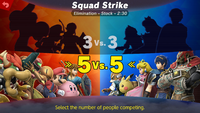
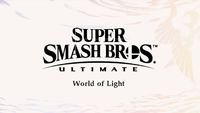
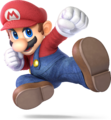

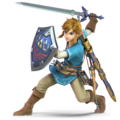
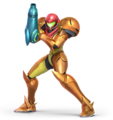
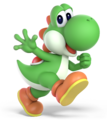

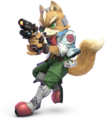
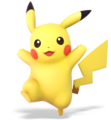
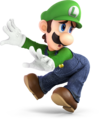

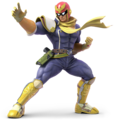
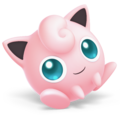

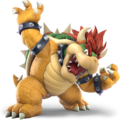

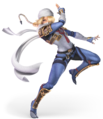
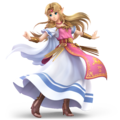
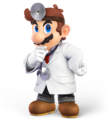
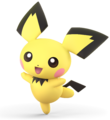
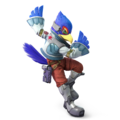
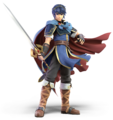
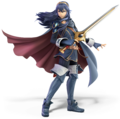
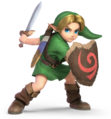
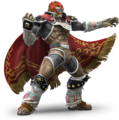
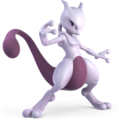
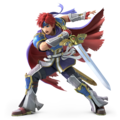
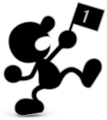
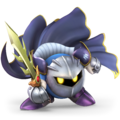
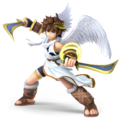
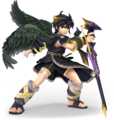
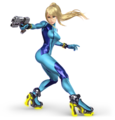
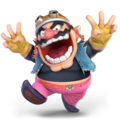

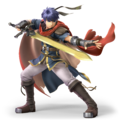


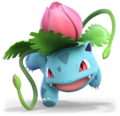
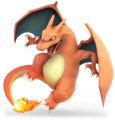


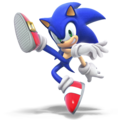
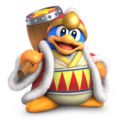
![40 Olimar (with Alph model swap)[5]](https://mario.wiki.gallery/images/thumb/b/b3/Olimar_SSBU.png/120px-Olimar_SSBU.png)

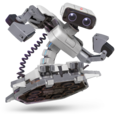
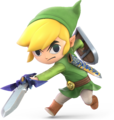
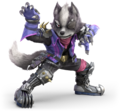
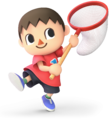
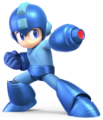

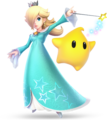
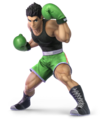
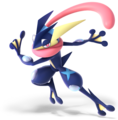

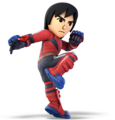
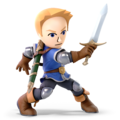
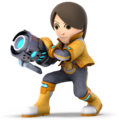
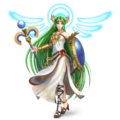

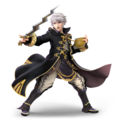
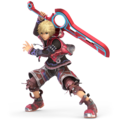
![58 Bowser Jr. (with Koopalings model swaps)[6]](https://mario.wiki.gallery/images/thumb/7/77/BowserJr_SSBU.png/107px-BowserJr_SSBU.png)

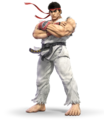
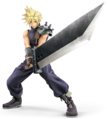
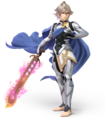
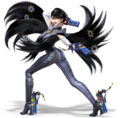
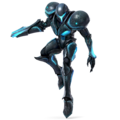
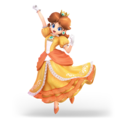
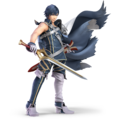
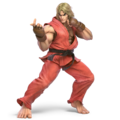
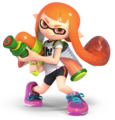
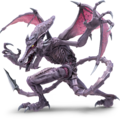
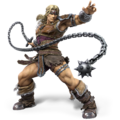
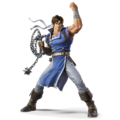
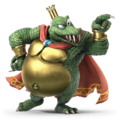
![68 Isabelle [7]](https://mario.wiki.gallery/images/thumb/2/2b/Isabelle_SSBU.png/120px-Isabelle_SSBU.png)
![69 Incineroar [4]](https://mario.wiki.gallery/images/thumb/c/c4/Incineroar_SSBU.png/120px-Incineroar_SSBU.png)
![70 Piranha Plant* [4]](https://mario.wiki.gallery/images/thumb/f/f0/Piranha_Plant_SSBU.png/120px-Piranha_Plant_SSBU.png)
![New Donk City Hall[8]](https://mario.wiki.gallery/images/thumb/a/a2/New_Donk_City_Hall_SSBU_entrance.png/120px-New_Donk_City_Hall_SSBU_entrance.png)


![Dracula's Castle[3]](https://mario.wiki.gallery/images/thumb/9/99/DraculasCastle1.jpg/120px-DraculasCastle1.jpg)

![Final Destination[9]](https://mario.wiki.gallery/images/thumb/c/ca/Final_Destination_light_BG_SSBU.png/120px-Final_Destination_light_BG_SSBU.png)



![Hyrule Castle[10]](https://mario.wiki.gallery/images/thumb/f/f7/Hyrule_Castle_SSBU.png/120px-Hyrule_Castle_SSBU.png)

![Dream Land[11]](https://mario.wiki.gallery/images/thumb/9/96/Dream_Land_SSBU.png/120px-Dream_Land_SSBU.png)
![Saffron City[9]](https://mario.wiki.gallery/images/thumb/f/f6/Saffron_City_SSBU.png/120px-Saffron_City_SSBU.png)


![Mushroom Kingdom II[12]](https://mario.wiki.gallery/images/thumb/6/6c/Mushroom_Kingdom_II_SSBU.png/120px-Mushroom_Kingdom_II_SSBU.png)

![Jungle Japes[13]](https://mario.wiki.gallery/images/thumb/9/9b/Jungle_Japes_SSBU.png/120px-Jungle_Japes_SSBU.png)


![Brinstar[14]](https://mario.wiki.gallery/images/thumb/e/e9/Brinstar_SSBU.png/120px-Brinstar_SSBU.png)






![Venom[15]](https://mario.wiki.gallery/images/thumb/f/f0/Venom_SSBU.jpg/120px-Venom_SSBU.jpg)
![Pokémon Stadium[16]](https://mario.wiki.gallery/images/thumb/a/ad/Pokemon_Stadium_SSBU.png/120px-Pokemon_Stadium_SSBU.png)
![Onett[9]](https://mario.wiki.gallery/images/thumb/b/be/Onett_SSBU.jpg/120px-Onett_SSBU.jpg)


![Delfino Plaza[17]](https://mario.wiki.gallery/images/thumb/4/47/Delfino_Plaza_SSBU.jpg/120px-Delfino_Plaza_SSBU.jpg)




![75m[18]](https://mario.wiki.gallery/images/thumb/1/1a/75m_SSBU.png/120px-75m_SSBU.png)


![Norfair[19]](https://mario.wiki.gallery/images/thumb/e/e2/Norfair_SSBU.png/120px-Norfair_SSBU.png)

![Yoshi's Island[20]](https://mario.wiki.gallery/images/thumb/f/f9/Yoshi%27s_Island_SSBU.png/120px-Yoshi%27s_Island_SSBU.png)
![Halberd[21]](https://mario.wiki.gallery/images/thumb/b/b2/HalberdUltimate.jpg/120px-HalberdUltimate.jpg)



![Port Town Aero Dive[22]](https://mario.wiki.gallery/images/thumb/b/b7/Port_Town_Aero_Dive_SSBU.png/120px-Port_Town_Aero_Dive_SSBU.png)



![Smashville[23]](https://mario.wiki.gallery/images/thumb/a/af/Smashville_SSBU.png/120px-Smashville_SSBU.png)


![Skyworld[9]](https://mario.wiki.gallery/images/thumb/c/cd/SkyworldUltimate.jpg/120px-SkyworldUltimate.jpg)



![Boxing Ring[9]](https://mario.wiki.gallery/images/thumb/c/c7/BoxingUltimate.jpg/120px-BoxingUltimate.jpg)

![Duck Hunt[24]](https://mario.wiki.gallery/images/thumb/d/d8/Duck_Hunt_SSBU.png/120px-Duck_Hunt_SSBU.png)

![Super Mario Maker[25]](https://mario.wiki.gallery/images/thumb/5/51/MakerUltimate.jpg/120px-MakerUltimate.jpg)
![Suzaku Castle[9]](https://mario.wiki.gallery/images/thumb/f/f4/SuzakuUltimate.jpg/120px-SuzakuUltimate.jpg)





![Gerudo Valley[26]](https://mario.wiki.gallery/images/thumb/a/a7/Gerudo_Valley_SSBU.png/120px-Gerudo_Valley_SSBU.png)







![Reset Bomb Forest[27]](https://mario.wiki.gallery/images/thumb/2/2d/ResetBombUltimate.jpg/120px-ResetBombUltimate.jpg)

![Balloon Fight[22]](https://mario.wiki.gallery/images/thumb/8/8f/Balloon_Fight_SSBU.png/120px-Balloon_Fight_SSBU.png)










![Kalos Pokémon League[11]](https://mario.wiki.gallery/images/thumb/8/80/Kalos_Pokemon_League_SSBU.png/120px-Kalos_Pokemon_League_SSBU.png)
![Coliseum[9]](https://mario.wiki.gallery/images/thumb/d/d4/Coliseum_SSBU.jpg/120px-Coliseum_SSBU.jpg)

![Palutena's Temple[28]](https://mario.wiki.gallery/images/thumb/b/b9/Palutena%27s_Temple_SSBU.png/120px-Palutena%27s_Temple_SSBU.png)


![Town and City[9]](https://mario.wiki.gallery/images/thumb/1/1a/Town_and_City_SSBU.jpg/120px-Town_and_City_SSBU.jpg)



![Wuhu Island[29]](https://mario.wiki.gallery/images/thumb/a/a0/Wuhu_Island_SSBU.jpg/120px-Wuhu_Island_SSBU.jpg)

![Pac-Land[30]](https://mario.wiki.gallery/images/thumb/f/ff/Pac-Land_SSBU.png/120px-Pac-Land_SSBU.png)
![Banana Gun[31][32]](https://mario.wiki.gallery/images/thumb/2/2a/BananaGunUltimate.png/120px-BananaGunUltimate.png)
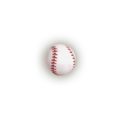
![Black Hole[9]](https://mario.wiki.gallery/images/thumb/1/1c/BlackHoleUltimate.png/120px-BlackHoleUltimate.png)
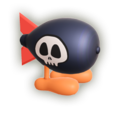
![Death's Scythe[3]](https://mario.wiki.gallery/images/thumb/3/34/DeathScytheUltimate.png/116px-DeathScytheUltimate.png)
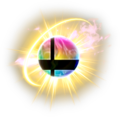
![Healing Field[1]](https://mario.wiki.gallery/images/thumb/4/45/HealingFieldUltimate.png/120px-HealingFieldUltimate.png)
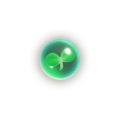
![Killing Edge[3]](https://mario.wiki.gallery/images/thumb/1/1f/KillingEdgeUltimate.png/111px-KillingEdgeUltimate.png)
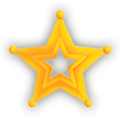
![Rage Blaster[3]](https://mario.wiki.gallery/images/thumb/b/ba/RageBlasterUltimate.png/120px-RageBlasterUltimate.png)
![Ramblin' Evil Mushroom[3]](https://mario.wiki.gallery/images/thumb/4/4c/EvilMushroomUltimate.png/120px-EvilMushroomUltimate.png)
![Staff[3]](https://mario.wiki.gallery/images/thumb/0/02/StaffUltimate.png/113px-StaffUltimate.png)
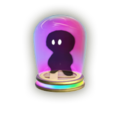
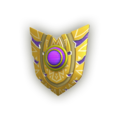
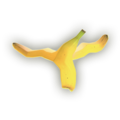
![Barrel[31]](https://mario.wiki.gallery/images/thumb/8/80/BarrelUltimate.png/120px-BarrelUltimate.png)
![Beam Sword[33]](https://mario.wiki.gallery/images/thumb/9/99/BeamSwordUltimate.png/120px-BeamSwordUltimate.png)
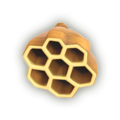
![Beetle[22]](https://mario.wiki.gallery/images/thumb/e/e0/BeetleUltimate.png/120px-BeetleUltimate.png)
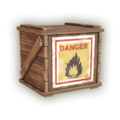
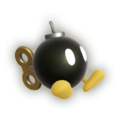
![Bombchu[31]](https://mario.wiki.gallery/images/thumb/e/ec/BombchuUltimate.png/120px-BombchuUltimate.png)
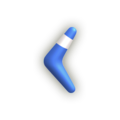
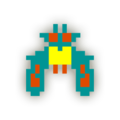
![Bullet Bill[34]](https://mario.wiki.gallery/images/thumb/d/d0/BulletBillUltimate.png/120px-BulletBillUltimate.png)
![Bumper[31]](https://mario.wiki.gallery/images/thumb/1/14/BumperUltimate.png/120px-BumperUltimate.png)
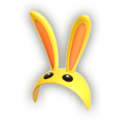
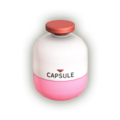
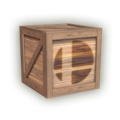
![Cucco[35]](https://mario.wiki.gallery/images/thumb/0/02/CuccoUltimate.png/120px-CuccoUltimate.png)
![Daybreak Parts[4]](https://mario.wiki.gallery/images/thumb/c/c1/DaybreakPartsUltimate.png/119px-DaybreakPartsUltimate.png)
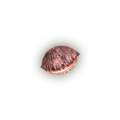
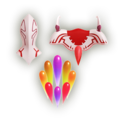
![Drill[31]](https://mario.wiki.gallery/images/thumb/d/db/DrillUltimate.png/120px-DrillUltimate.png)
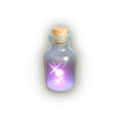
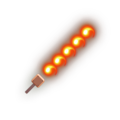
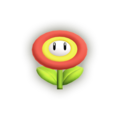
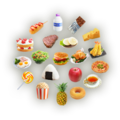
![Franklin Badge[36]](https://mario.wiki.gallery/images/thumb/1/1d/FranklinBadgeUltimate.png/120px-FranklinBadgeUltimate.png)
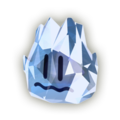
![Golden Hammer[31]](https://mario.wiki.gallery/images/thumb/2/2b/GoldenHammerUltimate.png/120px-GoldenHammerUltimate.png)
![Gooey Bomb[31]](https://mario.wiki.gallery/images/thumb/6/6b/GooeyBombUltimate.png/120px-GooeyBombUltimate.png)
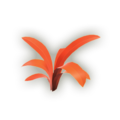
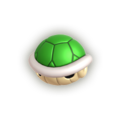
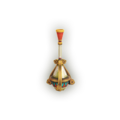
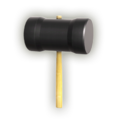
![Heart Container[33]](https://mario.wiki.gallery/images/thumb/a/a7/HeartContainerUltimate.png/120px-HeartContainerUltimate.png)
![Hocotate Bomb[31]](https://mario.wiki.gallery/images/thumb/a/af/HocotateBombUltimate.png/120px-HocotateBombUltimate.png)
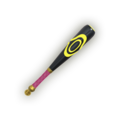
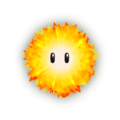
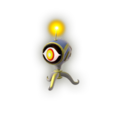
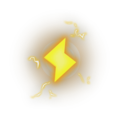
![Lip's Stick[37]](https://mario.wiki.gallery/images/thumb/e/e7/Lip%27sStickUltimate.png/120px-Lip%27sStickUltimate.png)
![Maxim Tomato[31]](https://mario.wiki.gallery/images/thumb/0/0a/MaximTomatoUltimate.png/120px-MaximTomatoUltimate.png)
![Master Ball[38]](https://mario.wiki.gallery/images/thumb/d/d5/MasterBallUltimate.png/120px-MasterBallUltimate.png)
![Metal Box[31]](https://mario.wiki.gallery/images/thumb/c/c2/MetalBoxUltimate.png/120px-MetalBoxUltimate.png)
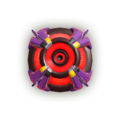
![Mr. Saturn[33]](https://mario.wiki.gallery/images/thumb/4/47/Mr.SaturnUltimate.png/120px-Mr.SaturnUltimate.png)
![Ore Club[33]](https://mario.wiki.gallery/images/thumb/8/8f/OreClubUltimate.png/120px-OreClubUltimate.png)
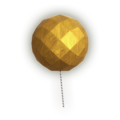
![Pitfall[39]](https://mario.wiki.gallery/images/thumb/1/1d/PitfallUltimate.png/120px-PitfallUltimate.png)
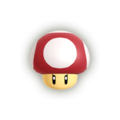
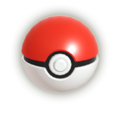
![POW Block[40]](https://mario.wiki.gallery/images/thumb/b/b8/POWBlockUltimate.png/120px-POWBlockUltimate.png)

![Rocket Belt[34]](https://mario.wiki.gallery/images/thumb/6/6d/RocketBeltUltimate.png/120px-RocketBeltUltimate.png)
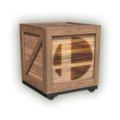
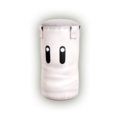
![Screw Attack[36]](https://mario.wiki.gallery/images/thumb/f/f9/ScrewAttackUltimate.png/120px-ScrewAttackUltimate.png)
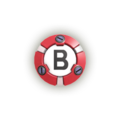
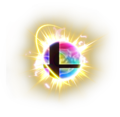
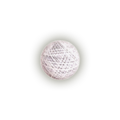
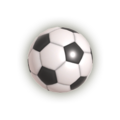
![Special Flag[4]](https://mario.wiki.gallery/images/thumb/c/c6/SpecialFlagUltimate.png/120px-SpecialFlagUltimate.png)
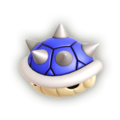
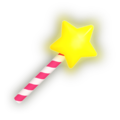
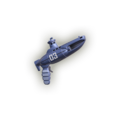
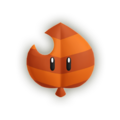
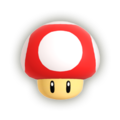
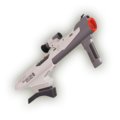
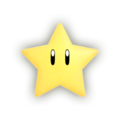
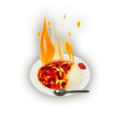
![Timer[31]](https://mario.wiki.gallery/images/thumb/3/35/TimerUltimate.png/120px-TimerUltimate.png)
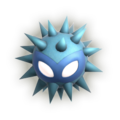
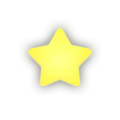
![X Bomb[31]](https://mario.wiki.gallery/images/thumb/6/63/XBombUltimate.png/120px-XBombUltimate.png)
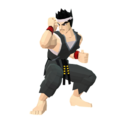
![Alucard[3]](https://mario.wiki.gallery/images/thumb/d/d2/AlucardUltimate.png/120px-AlucardUltimate.png)
![Arcade Bunny[31]](https://mario.wiki.gallery/images/thumb/2/26/ArcadeUltimate.png/120px-ArcadeUltimate.png)
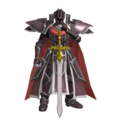
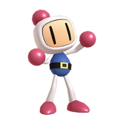
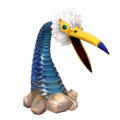
![Chef Kawasaki[3]](https://mario.wiki.gallery/images/thumb/4/4e/ChefUltimate.png/120px-ChefUltimate.png)


![Kapp'n[3]](https://mario.wiki.gallery/images/thumb/0/0e/KappnUltimate.png/120px-KappnUltimate.png)
![Klaptrap[3]](https://mario.wiki.gallery/images/thumb/9/9d/SSBU_Klaptrap_artwork.png/120px-SSBU_Klaptrap_artwork.png)
![Knuckles[31]](https://mario.wiki.gallery/images/thumb/0/06/KnucklesUltimate.png/120px-KnucklesUltimate.png)
![Krystal[31]](https://mario.wiki.gallery/images/thumb/f/fc/KrystalUltimate.png/120px-KrystalUltimate.png)
![Moon[3]](https://mario.wiki.gallery/images/thumb/1/18/MoonUltimate.png/120px-MoonUltimate.png)
![Nikki[3]](https://mario.wiki.gallery/images/thumb/0/08/NikkiUltimate.png/120px-NikkiUltimate.png)
![Rathalos[3]](https://mario.wiki.gallery/images/thumb/d/d9/RathalosUltimate.png/120px-RathalosUltimate.png)
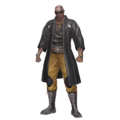
![Shovel Knight[3]](https://mario.wiki.gallery/images/thumb/8/8b/ShovelUltimate.png/120px-ShovelUltimate.png)
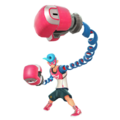


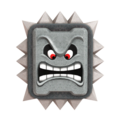
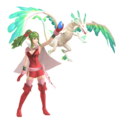
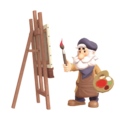
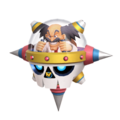
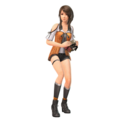
![Zero[3]](https://mario.wiki.gallery/images/thumb/2/25/ZeroUltimate.png/120px-ZeroUltimate.png)
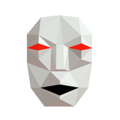
![Ashley[3]](https://mario.wiki.gallery/images/thumb/c/c4/Ashley_SSBU.png/120px-Ashley_SSBU.png)
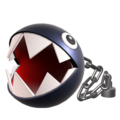
![Color TV-Game 15[31]](https://mario.wiki.gallery/images/thumb/7/7c/Color_TV-Game_15_SSBU.png/120px-Color_TV-Game_15_SSBU.png)
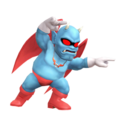
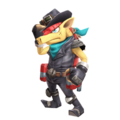
![Dr. Kawashima[41]](https://mario.wiki.gallery/images/thumb/e/e2/Dr._Kawashima_SSBU.png/120px-Dr._Kawashima_SSBU.png)
![Dr. Wright[42]](https://mario.wiki.gallery/images/thumb/4/47/Dr._Wright_SSBU.png/120px-Dr._Wright_SSBU.png)
![Ghirahim[41]](https://mario.wiki.gallery/images/thumb/a/a5/Ghirahim_SSBU.png/120px-Ghirahim_SSBU.png)
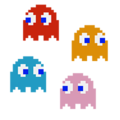
![Gray Fox[3]](https://mario.wiki.gallery/images/thumb/7/77/GrayFoxUltimate.png/120px-GrayFoxUltimate.png)
![Hammer Bro[9]](https://mario.wiki.gallery/images/thumb/9/9f/Hammer_Bro_SSBU.png/120px-Hammer_Bro_SSBU.png)
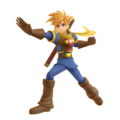
![Jeff[31]](https://mario.wiki.gallery/images/thumb/b/b5/Jeff_SSBU.png/120px-Jeff_SSBU.png)
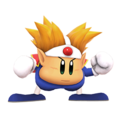
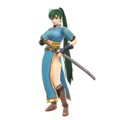
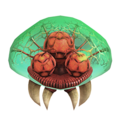
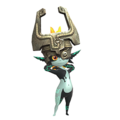
![Mother Brain[31]](https://mario.wiki.gallery/images/thumb/5/5b/Mother_Brain_SSBU.png/120px-Mother_Brain_SSBU.png)
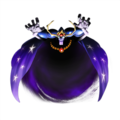
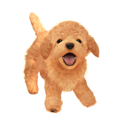
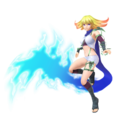

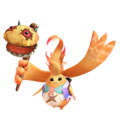
![Samurai Goroh[31]](https://mario.wiki.gallery/images/thumb/c/c6/Samurai_Goroh_SSBU.png/120px-Samurai_Goroh_SSBU.png)
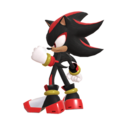
![Sheriff[34]](https://mario.wiki.gallery/images/thumb/d/d2/Sheriff_SSBU.png/120px-Sheriff_SSBU.png)
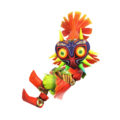
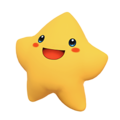
![Starman[9]](https://mario.wiki.gallery/images/thumb/6/61/Starman_SSBU.png/120px-Starman_SSBU.png)
![Takamaru[9]](https://mario.wiki.gallery/images/thumb/b/be/Takamaru_SSBU.png/120px-Takamaru_SSBU.png)
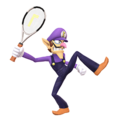
![Abra[34]](https://mario.wiki.gallery/images/thumb/a/ac/AbraUltimate.png/120px-AbraUltimate.png)
![Alolan Exeggutor[3]](https://mario.wiki.gallery/images/thumb/0/00/AlolanExeggutorUltimate.png/120px-AlolanExeggutorUltimate.png)
![Alolan Raichu[31]](https://mario.wiki.gallery/images/thumb/d/de/AlolanRaichuUltimate.png/120px-AlolanRaichuUltimate.png)
![Alolan Vulpix[38]](https://mario.wiki.gallery/images/thumb/f/f7/AlolanVulpix_SSBUltimate.png/120px-AlolanVulpix_SSBUltimate.png)
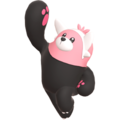
![Ditto[3]](https://mario.wiki.gallery/images/thumb/c/c0/Ditto_Ultimate.png/120px-Ditto_Ultimate.png)
![Lunala[9]](https://mario.wiki.gallery/images/thumb/2/2d/LunalaUltimate.png/120px-LunalaUltimate.png)
![Marshadow[3]](https://mario.wiki.gallery/images/thumb/d/d5/MarshadowUltimate.png/120px-MarshadowUltimate.png)
![Mimikyu[3]](https://mario.wiki.gallery/images/thumb/2/26/MimikyuUltimate.png/120px-MimikyuUltimate.png)
![Pyukumuku[3]](https://mario.wiki.gallery/images/thumb/7/7a/PyukumukuUltimate.png/120px-PyukumukuUltimate.png)
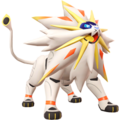
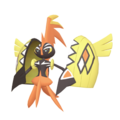
![Togedemaru[43]](https://mario.wiki.gallery/images/thumb/c/cd/TogedemaruUltimate.png/120px-TogedemaruUltimate.png)
![Vulpix[3]](https://mario.wiki.gallery/images/thumb/e/e7/VulpixUltimate.png/120px-VulpixUltimate.png)
![Abomasnow[44]](https://mario.wiki.gallery/images/thumb/f/fc/SSBU_Abomasnow.png/120px-SSBU_Abomasnow.png)
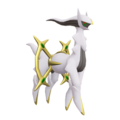
![Bellossom[38]](https://mario.wiki.gallery/images/thumb/a/a1/SSBU_Bellossom.png/120px-SSBU_Bellossom.png)
![Chespin[43]](https://mario.wiki.gallery/images/thumb/c/c6/SSBU_Chespin.png/120px-SSBU_Chespin.png)
![Darkrai[9]](https://mario.wiki.gallery/images/thumb/3/33/SSBU_Darkrai.png/120px-SSBU_Darkrai.png)

![Deoxys[31]](https://mario.wiki.gallery/images/thumb/8/87/SSBU_Deoxys.png/120px-SSBU_Deoxys.png)
![Electrode[31]](https://mario.wiki.gallery/images/thumb/5/5d/SSBU_Electrode.png/120px-SSBU_Electrode.png)
![Eevee[33]](https://mario.wiki.gallery/images/thumb/d/d1/SSBU_Eevee.png/120px-SSBU_Eevee.png)
![Entei[33]](https://mario.wiki.gallery/images/thumb/1/1c/SSBU_Entei.png/120px-SSBU_Entei.png)
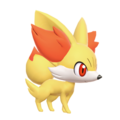
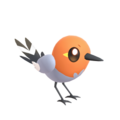
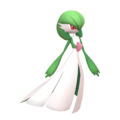
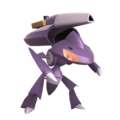
![Giratina[33]](https://mario.wiki.gallery/images/thumb/a/a9/SSBU_Giratina.png/120px-SSBU_Giratina.png)
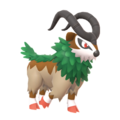
![Goldeen[35]](https://mario.wiki.gallery/images/thumb/a/a4/SSBU_Goldeen.png/120px-SSBU_Goldeen.png)
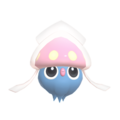
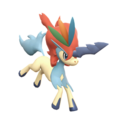
![Kyogre[38]](https://mario.wiki.gallery/images/thumb/7/79/SSBU_Kyogre.png/120px-SSBU_Kyogre.png)
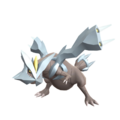
![Latios and Latias[38]](https://mario.wiki.gallery/images/thumb/1/1e/SSBU_Latias_%26_Latios.png/120px-SSBU_Latias_%26_Latios.png)
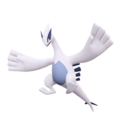
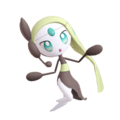
![Meowth[31]](https://mario.wiki.gallery/images/thumb/3/34/SSBU_Meowth.png/120px-SSBU_Meowth.png)
![Metagross[38]](https://mario.wiki.gallery/images/thumb/a/a8/SSBU_Metagross.png/120px-SSBU_Metagross.png)
![Mew[38]](https://mario.wiki.gallery/images/thumb/f/f0/SSBU_Mew.png/120px-SSBU_Mew.png)
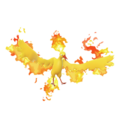
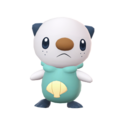
![Palkia[45]](https://mario.wiki.gallery/images/thumb/4/49/SSBU_Palkia.png/120px-SSBU_Palkia.png)
![Scizor[34]](https://mario.wiki.gallery/images/thumb/8/8b/SSBU_Scizor.png/120px-SSBU_Scizor.png)
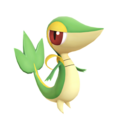
![Snorlax[34]](https://mario.wiki.gallery/images/thumb/3/3f/SSBU_Snorlax.png/120px-SSBU_Snorlax.png)
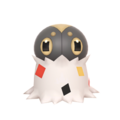
![Staryu[9]](https://mario.wiki.gallery/images/thumb/a/aa/SSBU_Staryu.png/120px-SSBU_Staryu.png)
![Suicune[44]](https://mario.wiki.gallery/images/thumb/4/40/SSBU_Suicune.png/120px-SSBU_Suicune.png)
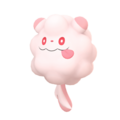
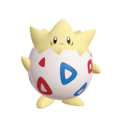
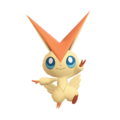
![Xerneas[41]](https://mario.wiki.gallery/images/thumb/2/21/SSBU_Xerneas.png/120px-SSBU_Xerneas.png)
![Zoroark[9]](https://mario.wiki.gallery/images/thumb/6/64/SSBU_Zoroark.png/120px-SSBU_Zoroark.png)
